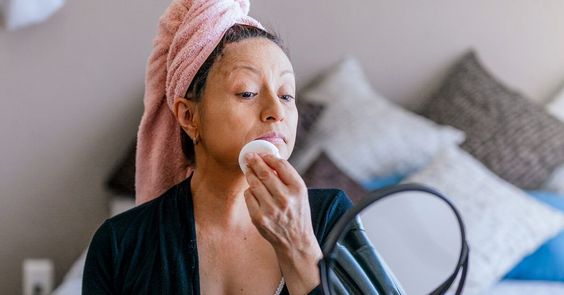Introduction
Perioral dermatitis is a common skin condition that causes redness and inflammation around the mouth. It can be itchy and uncomfortable, and often looks like acne. While the exact cause of perioral dermatitis is unknown, there are several factors that are thought to contribute to its development. These include the use of topical corticosteroids, certain cosmetics and skincare products, hormonal fluctuations, and an overgrowth of yeast on the skin.

Perioral dermatitis is more common in women than men and typically affects adults between the ages of 16 and 45. While it can be a frustrating condition to deal with, the good news is that it is treatable. In this blog post, we'll discuss the symptoms, causes, and treatment of perioral dermatitis so you can get on the road to recovery.
Symptoms of Perioral Dermatitis
The main symptom of perioral dermatitis is a red rash around the mouth. This rash may be itchy, burning, or scaly. Other symptoms include:
- Small, red bumps or papules
- Dry, flaky skin
- Burning or stinging sensation
- Puss-filled blisters
The rash can vary in appearance from person to person, and it may come and go. In some cases, the rash may spread to other areas of the face, such as the nose, forehead, and chin.
What Causes Perioral Dermatitis?
As mentioned above, the exact cause of perioral dermatitis is unknown. However, there are several factors that can trigger or worsen the condition. These include:
- Topical corticosteroids: Using strong steroid creams or ointments on the face can increase your risk of developing perioral dermatitis.
- Cosmetics and skincare products: Certain ingredients in cosmetics and skincare products, such as fragrances, parabens, and sodium lauryl sulfate, can irritate the skin and trigger a flare-up.
- Hormonal fluctuations: Changes in hormone levels, such as those that occur during pregnancy or menopause, can also contribute to perioral dermatitis.
- Yeast overgrowth: An overgrowth of yeast on the skin can also trigger the condition.
How is Perioral Dermatitis Treated?
The first step in treating perioral dermatitis is to stop using any topical corticosteroids or irritating cosmetics and skincare products. If you have been using topical corticosteroids, your doctor may recommend tapering off slowly to avoid a flare-up. Once you have stopped using these products, your doctor may prescribe one or more of the following treatments:
- Topical antibiotics: These medications can help to reduce inflammation and kill bacteria that may be contributing to the condition.
- Oral antibiotics: In some cases, your doctor may prescribe oral antibiotics to help clear up the rash more quickly.
- Topical anti-inflammatory medications: These medications can help to reduce redness, itching, and swelling.
While these treatments are often effective, it's important to note that perioral dermatitis can be a chronic condition. This means that it can come and go, even with treatment. If you are struggling with perioral dermatitis, it is important to see a dermatologist or other healthcare provider to get a diagnosis and discuss treatment options. By following your doctor's instructions and avoiding triggers, you can help to manage the condition and reduce your risk of future flare-ups.





